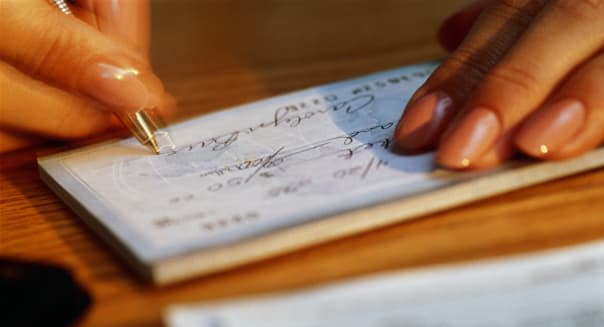Here's How the Way You Bank Dictates What You Pay to Bank

Few financial products are more popular than the basic checking account. According to an FDIC survey released last year, 90 percent of America's 115 million households have at least one checking account.
They're popular. They're ubiquitous. But what Americans pay for them varies greatly.
Recently, WalletPro released its 2013 Checking Account Cost Comparison Report, showing how expensive checking accounts have gotten for many types of customers. In particular, the report focused on the various behaviors that bank customers have and how they can lead to higher costs -- especially if you're not cost-conscious in choosing the bank that offers you the best value for your money.
How You Act and What You Pay
The WalletPro report separated Americans into five categories of customers based on the way they managed their checking accounts. The factors the report looked at included use of direct deposit, online banking resources, non-network ATMs, overdraft products, check writing, and international banking.
The least expensive category of checking account-holders were "old school" customers who used direct deposit but never used out-of-network ATMs or overdrafted their accounts. Their average annual cost was just $29.
The "young and high-tech" category came in at $47, based on the assumption that they'd occasionally use outside ATMs and have their account balances go below zero but would also save by using online tools to manage their accounts.
The "average Joe" category pays a bit more on average: $161 a year. They use direct deposit for their paychecks, and otherwise take advantage of standard account features like ATMs, online bill pay, check writing. They occasionally let their accounts go negative, but they don't opt-in to overdraft protection.
As you'd expect, the costliest category included those "cash-strapped" account holders who frequently overdrafted their accounts and had non-network ATM use. They paid a whopping $527 on average, due largely to expensive overdraft-related fees.
Similarly, "international and on-the-go" account holders paid up for global access to their money, with average fees of $327.
The Elusive Free Checking Account
Almost as disturbing as the amounts that some people are paying for their checking accounts is the fact that different banks charge much different rates for their accounts.
%VIRTUAL-article-sponsoredlinks%Make the wrong choice of bank, and you could end up paying hundreds more a year than a smarter selection would have produced.
For instance, smart banking shoppers who fell into the old school and young-and-high-tech categories were able to find multiple banks that offered them fee-free checking. Yet accounts with similar features at other financial institutions often imposed substantial fees, with amounts at the costliest institutions falling into the $200 to $300 range in certain circumstances.
The penalty for choosing a bad bank was even greater for customers in higher-cost categories. Cash-strapped customers could find banks that would charge as little as $174 annually, but other banks had costs of as much as almost $750. International-oriented accounts could cost as much as $500 at some banks, while the best came in at $218.
Tips to Save On Your Checking
From the report, you can draw some conclusions about the best ways you can save the most money on your checking account:
Never overdraft your account. Among the fees examined, overdrafts were the highest by far. Moreover, the report notes that "complex overdraft policies make it nearly impossible for borrowers to understand which account is more affordable." The best way to avoid that complexity and confusion is never to let your account go below zero.
Find the right bank for your needs. One key finding of the report was that with one notable exception, most banks that had low costs for one category of customers often weren't the cheapest for other categories. That means that when you open an account, it pays to take the time to look at the particular features each bank offers and figure out which ones you'll benefit most from.
Look for special deals. The report specifically chose not to look at checking accounts that had special requirements, such as being online-only or requiring a minimum deposit. Some banks, however, offer lower costs or higher interest to certain customers or for accounts with certain features and requirements. If those accounts fit your needs, then they can sometimes produce greater savings.
When it comes to bank accounts, one size definitely does not fit all. If you want a cheap checking account that meets all your needs without charging you an arm and a leg, it pays to take the time to do some comparison shopping.
You can follow Motley Fool contributor Dan Caplinger on Twitter @DanCaplinger or on Google+.

